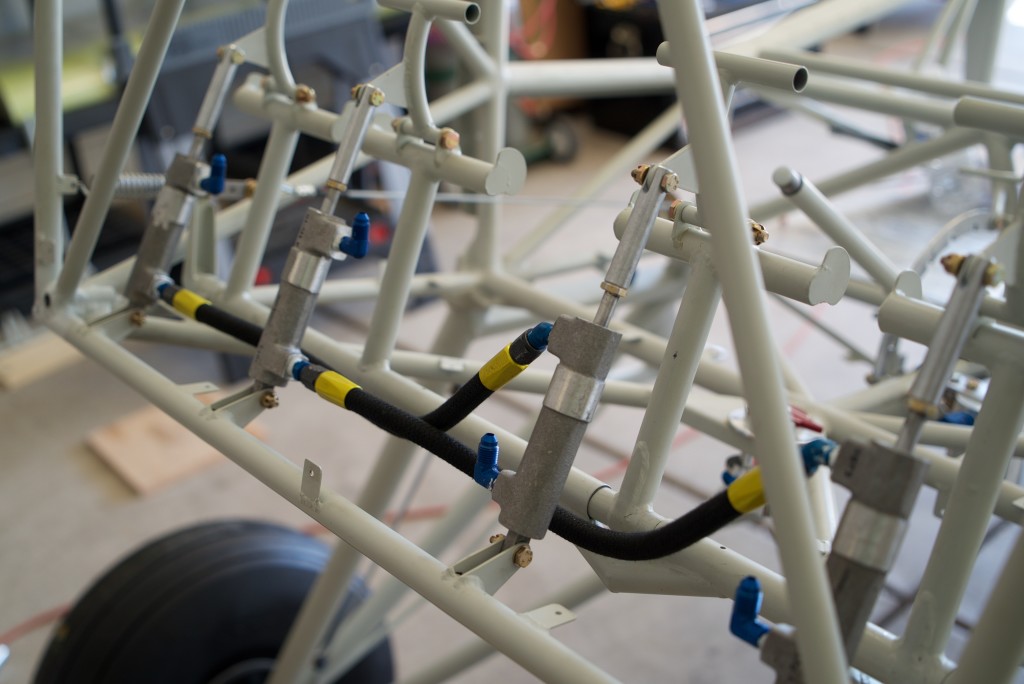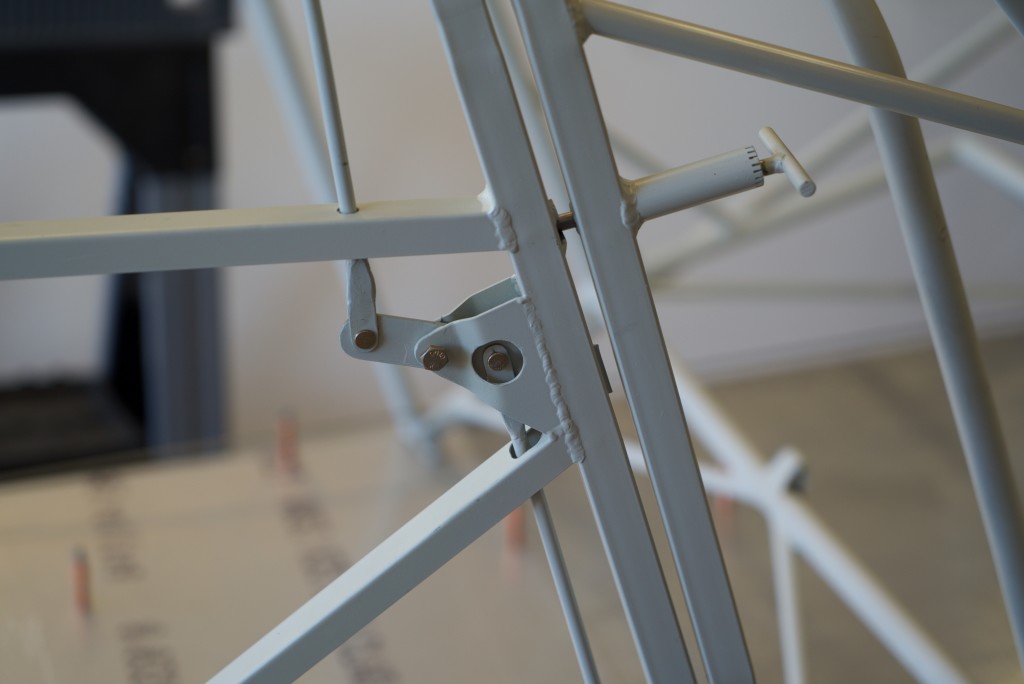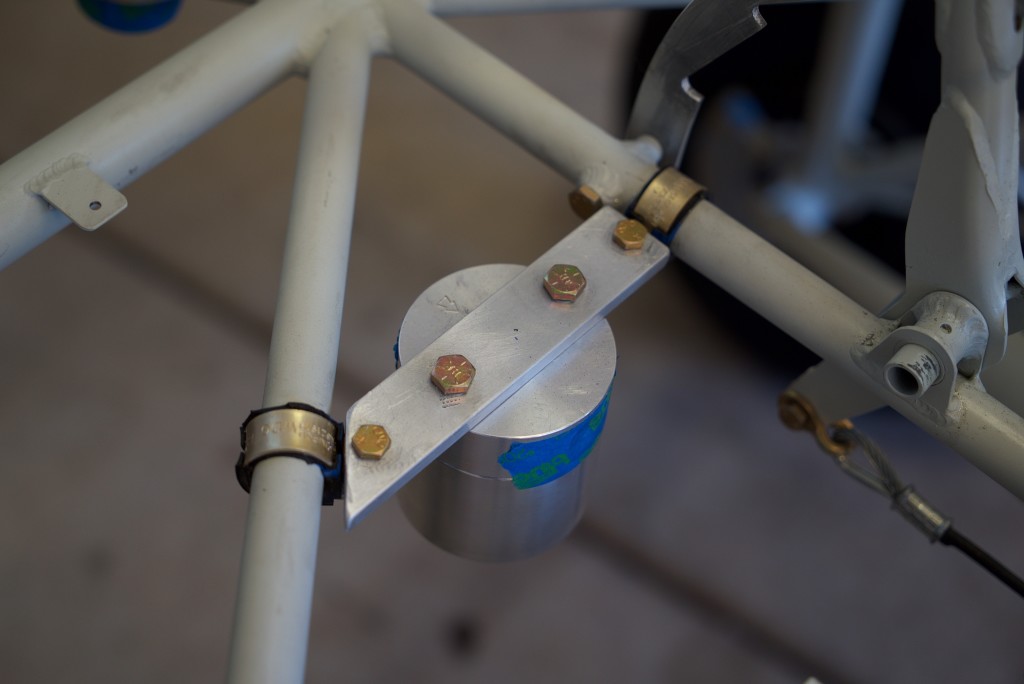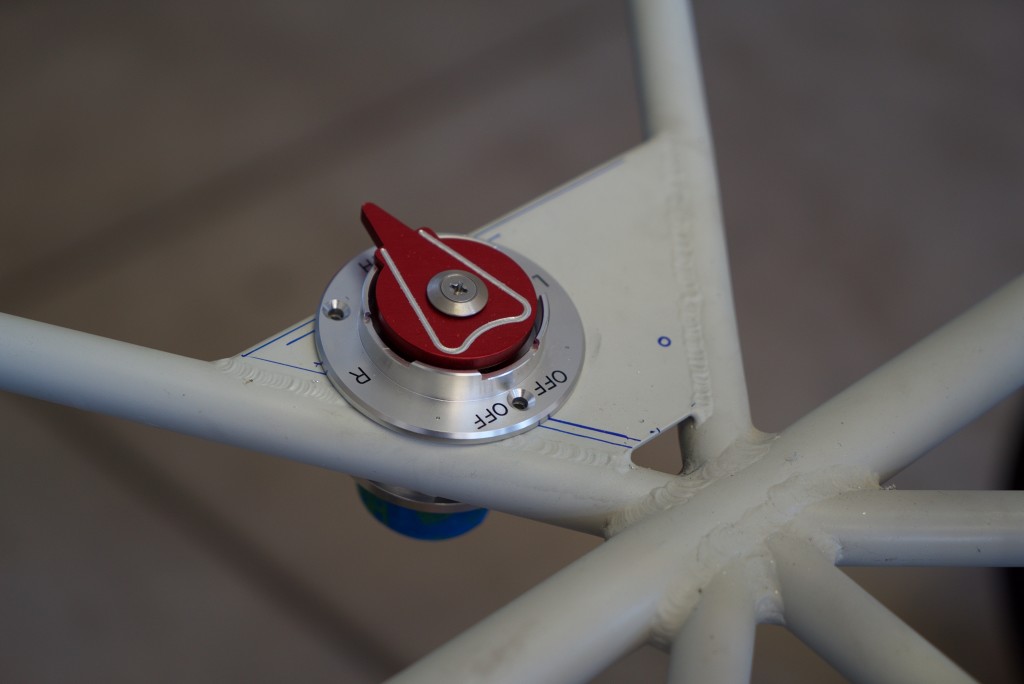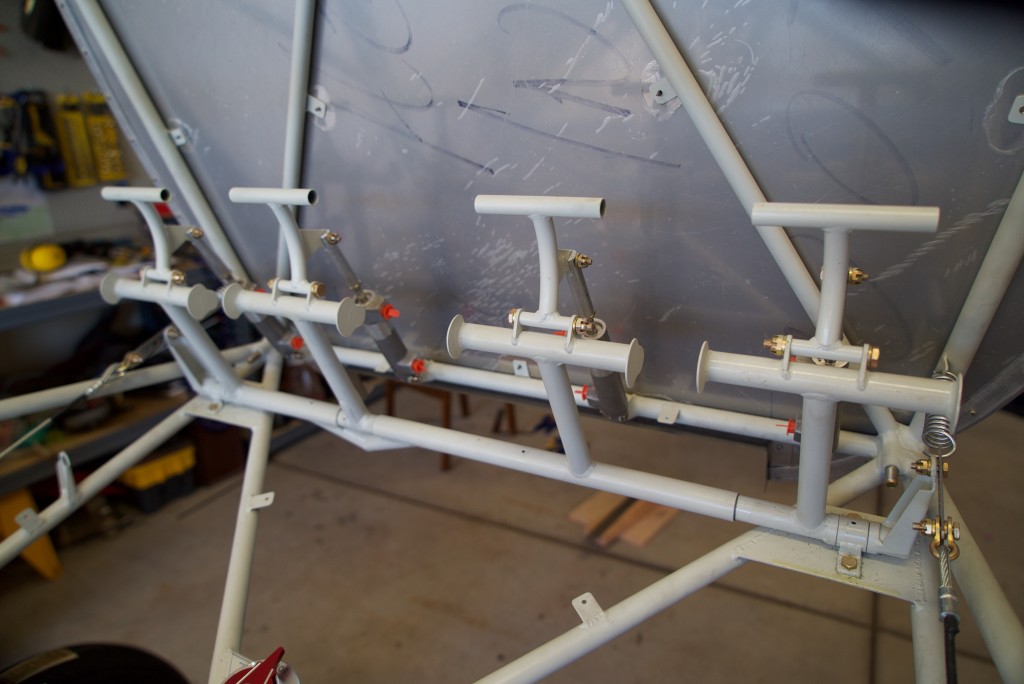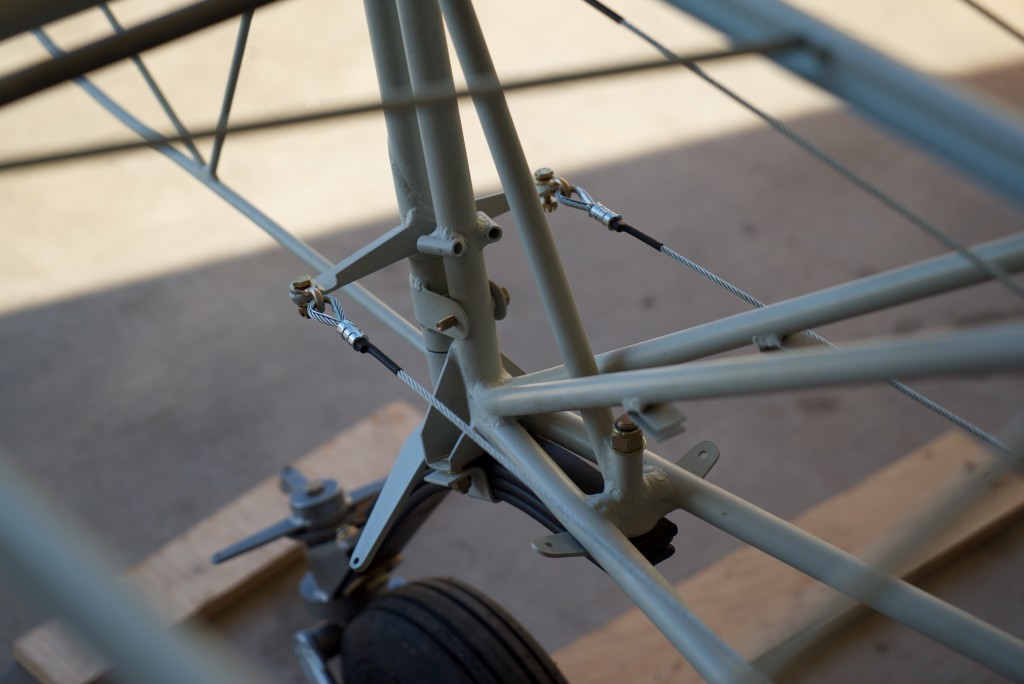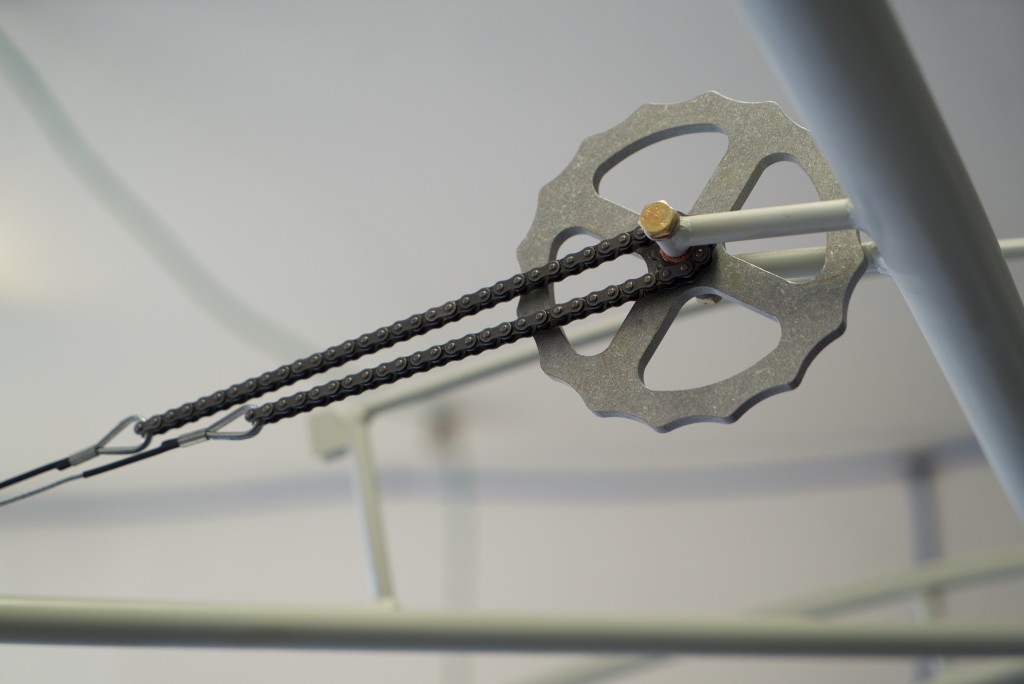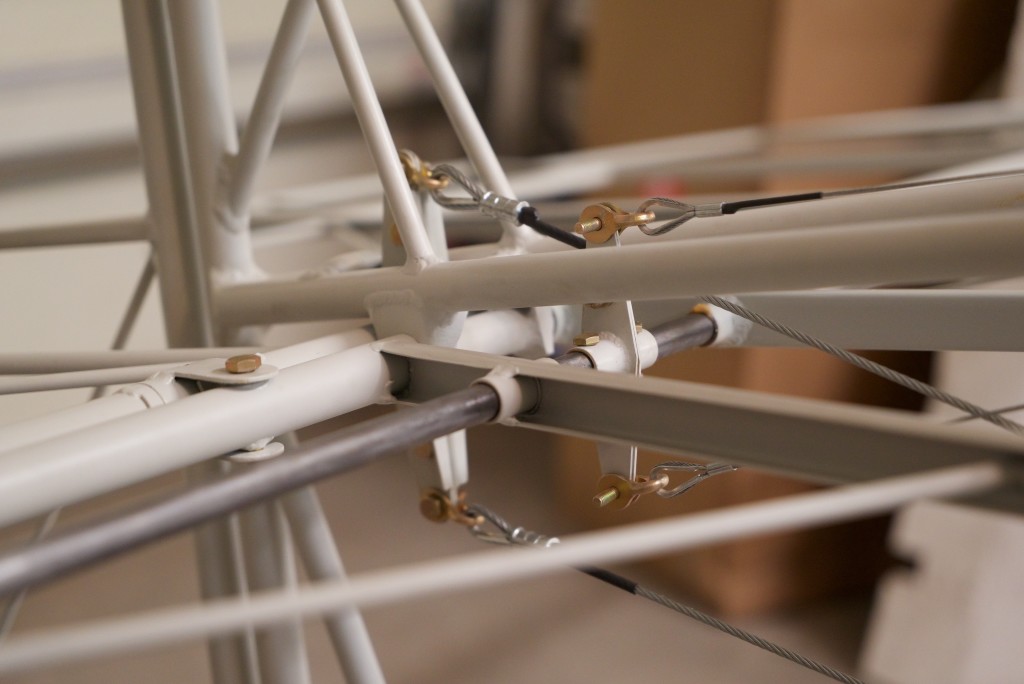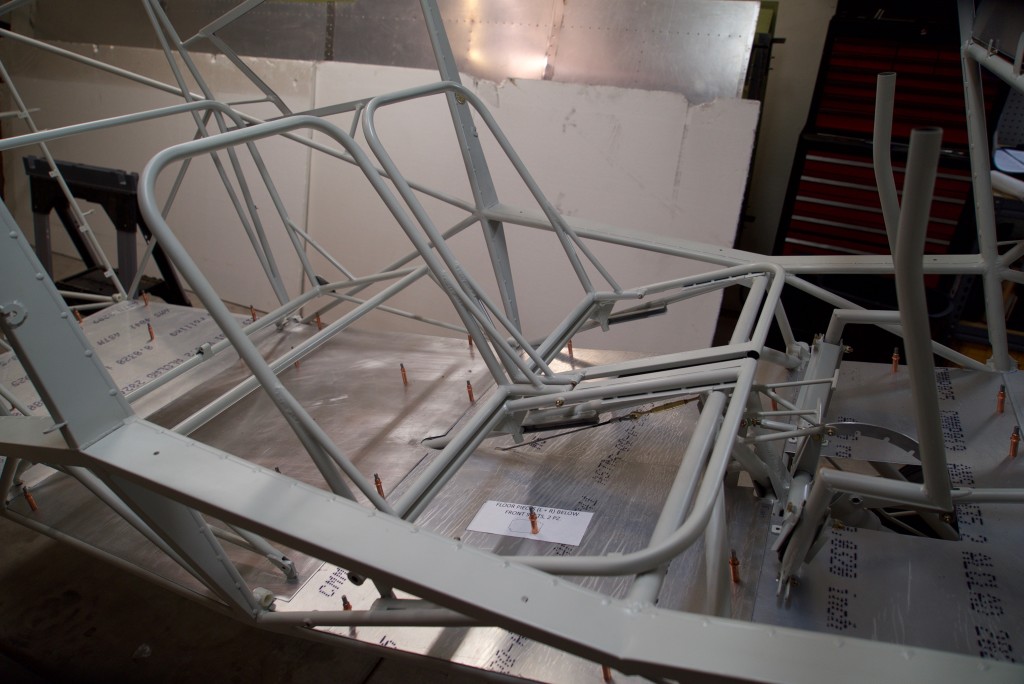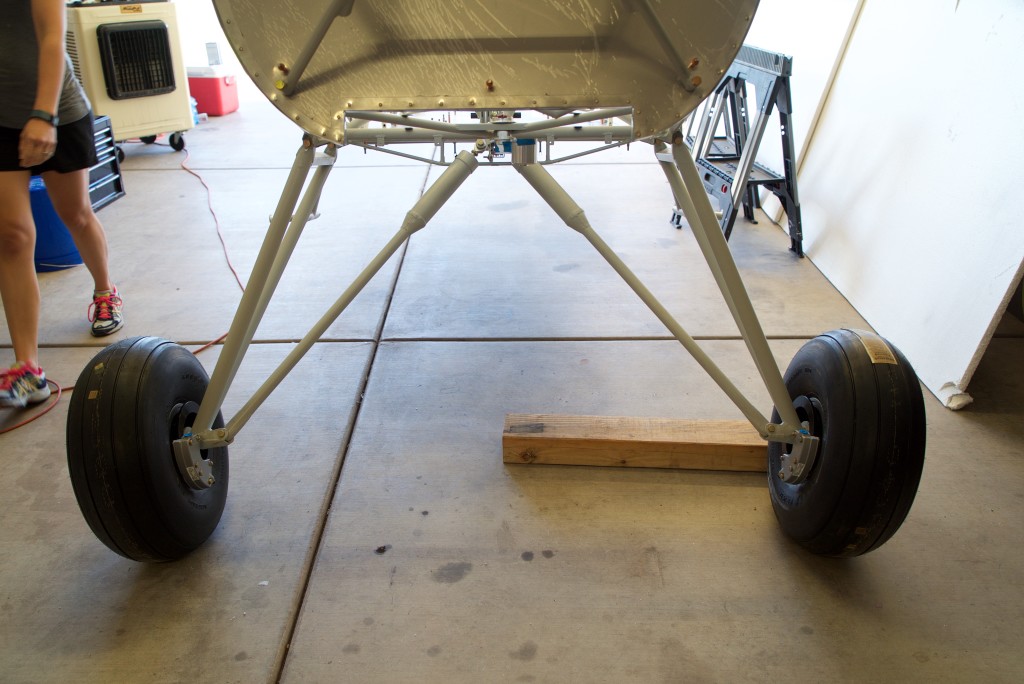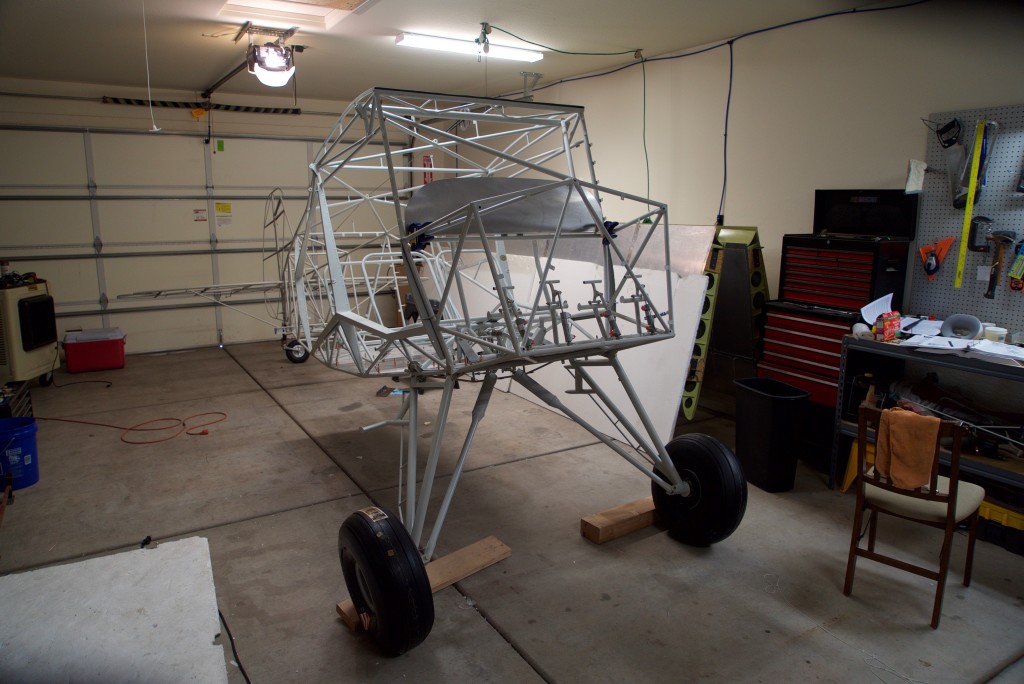Today I installed the former on the top of the instrument panel. It was a fairly straight forward process. It looks pretty cool with the Dynon pictures!
Category: Bearhawk 1175 Building Log
Building log of Bearhawk 1175
Brake Line Hoses
Cargo Door

One of the really cool things about the Bearhawk are the extremely large cargo doors!
It has a simple but very effective locking mechanism.
The doors when on rather easily however, the holes for the locking mechanism didn’t quite match up. So I ended up having to remove the old welded washers around the locking holes. Then I drilled the holes in the correct place and welded on the new doubling washers. All is good with the world again.
Gascolator and Fuel Valve
I’ve given the fuel system substantial thought. Several hours have been spent just pondering it! There are recommended ways and “rules” for everything to be done. From what I’ve seen there are plenty of people that depart from the rules and recommended ways! The fuel system is rather important so I intend to do it right.
The first “rule” I had to contend with was that the gascolator has to be the lowest point in the fuel system. This means it has to be behind the fuel valve. However, if you put the fuel valve where the designer recommends it, there’s not room for the gascolator at the same location.
After conferring with Mark Goldberg, I decided to fashion a mount for it near the flap handle. You can see in this picture my first rendition of this idea. I later built it with much thiner aluminum and moved the gascolator right to allow for line clearance.
You might be wondering why this fuel valve is backwards. I’ll get to that in a minute.
I settled on a SPRL fuel valve. It’s very smooth in operation and has positive locking positions that negate the need for a kick guard. It’s been recommended for Bearhawks and doesn’t have the “out” line exiting vertically like the Andair valves do. However, the SPRL “out” line exits forward. That might be fine for a nose dragger but not for a taildragger.
Which brings me to the second “rule” that I had to contend with – all fuel lines run down hill to the gascolator. Some people have just run a line out the front and back around the the gascolator but this breaks that rule. So I decided to mount the fuel valve backwards so the line exits at the rear and continues to flow downhill. I’ll have to figure a way to fix the labels, but I figured having a “correct” fuel system is more important than having to fix labels.
Flap Cables
Today I installed the remainder of the flap control cables. This picture is at the rear of the baggage area. A single cable runs underneath to this triangle. From there each cable goes up to pulleys then along the top of the fuselage to the wing to activate the flaps.
The triangle has 3/16″ holes in it but the turnbuckles were 1/4″. Some people had just enlarged the two holes to 1/4″. I decided to bush the turnbuckles down to 3/16″ instead. This is the way it was designed to be done since the original holes were 3/16″ and the kit came with bushing material.
Rudder Cables
Today I installed the rudder cables. The system can be installed without turnbuckles, but I’ve always been particular about rudder control and feel. So I decided to install the turn buckles so it can be adjusted exactly right.
The rudder cables contact the rear seat. This is because the fairleads at this station were omitted on my kit. I contacted Mark about this. He said that Bob visited the factory and didn’t think they were needed. Well…. on my kit they were needed. So I have a few options. I’ll probably just weld new fairleads into position.
Here you can see the rudder pedals connected with the springs and cables. I’ve been unable to find the suggested 1″ springs anywhere. I’ve settled on using these 3/4″ springs in the meantime. I’m still considering thicker or thinner springs.
Control Cables
The trim system required some bronze washers. I couldn’t find theses locally or at Aircraft Spruce but I did find them on Amazon! The chain needed a little bit of persuasion to accept the cables. I had to remove one link from each side.
Here are the elevator and trim control cables. The swaging process has been rather enjoyable. It’s cool to have the elevators actually work with the control stick!
Seats and flap control
Brake Calipers
Today I mounted the brake calipers. They’re the Grove 66-152. The manual says to mount them straight ahead to slightly down. As you can see they’re slightly down. After mounting them I would have preferred them to point a little more forward or even slightly up. I emailed Mark Goldberg to ask his opinion and he said they’re fine where they are.
The mounting plates for the brakes had holes for AN 6 bolts. I would have had clearance issues with them that size so I ended up bushing them down to AN 5.
Landing Gear
The Bearhawk normally comes with streamlined (airfoil shaped) landing gear struts. Some people have noted that in a severe ground loop the normal strut could collapse. So Mark Goldberg was kind enough to swap those out for these round ones at no additional charge.
These upgraded struts will beef up the landing gear substantially! I will need to put some kind of airfoil fairing on them eventually.
It looks pretty good sitting on it’s own landing gear now! As you can probably see, the landing gear looks rather narrow. This is because it doesn’t have full weight on wheels yet. It will eventually widen the gear an extra 10″ once full weight is on it.
The landing gear went together rather easily. The only problems I ran into was not having beefy enough retaining ring pliers and the rod ends not threading into the piston. So I had to make a quick run to AutoZone to pick up some heavy duty retaining ring pliers. Then I made a trip to Ace Hardware to pick up a tap for the threads. I had never tapped or cleaned up threads before, but EAAVideo.org has great videos for these kinds of things. The threads cleaned up nicely.


